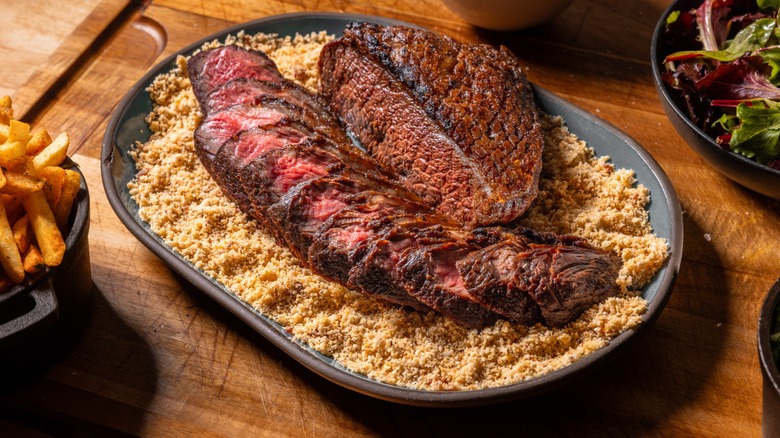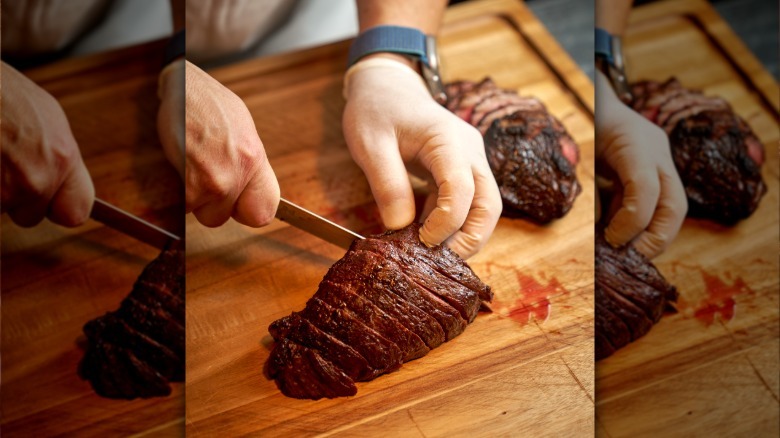What Exactly Is The Picanha Steak Cut And What's The Best Way To Cook It?
When you're trying to choose the perfect steak at the store, in addition to the usual suspects — filet mignon, ribeye, striploin, or rump — you may see cuts you're not so familiar with cooking at home, like picanha. So what exactly is this cut, and what should you do with it? To get some expert advice, Food Republic consulted chef Victor Vasconcellos of Berimbau restaurant in New York City.
The cut, which has a triangular shape and is a Brazilian steakhouse specialty, comes from the rump and is sometimes called the rump cap or sirloin cap. A defining characteristic is the thick layer of fat on the outside. "Picanha is prized for its tenderness and rich, beefy flavor, thanks to the unique fat cap that bastes the meat as it cooks, enhancing its juiciness and taste," explained Vasconcellos. "Unlike other cuts, picanha is usually cooked with its fat intact, which adds an indulgent, buttery texture to every bite."
With its delicious natural flavor, you don't need to do much to make the most of this cut. "Traditionally, picanha is seasoned simply with coarse sea salt," said Vasconcellos. "This minimal seasoning allows the natural flavor of the meat to shine, though some recipes may include garlic or a light rub of olive oil to enhance its savory profile." Try rubbing your steak with garlic to get all the flavor without the risk of it burning, and follow a few pro tips for the juiciest steak every time.
How to cook picanha for a tasty and tender result
Many different steaks require different cooking techniques, and picanha is no exception. "Slice the picanha into thick steaks (about 1.5 inches)," advised chef Victor Vasconcellos. "For grilling, start by cooking it fat-side down to render the fat and develop a crispy crust. Then sear the meat side briefly to lock in flavor." Skewer your beef before grilling it for more of a steakhouse-style serving. Alternatively, keep the picanha whole and roast it. "If roasting, cook it low and slow, finishing with a high-heat sear," suggested Vasconcellos.
He also offered a couple of warnings for home cooks: "Please don't remove the fat cap — it's essential for flavor and moisture," he said. If you don't want to eat the fat, keep it on during cooking and remove it before serving. Vasconcellos also advised to "let the meat come to room temperature before cooking to ensure even doneness." This is because cooking steak cold is a mistake that can lead to an overcooked exterior and underdone interior.
However you cook it, make sure it's not overcooked because "picanha is best served medium rare to medium for optimal tenderness," noted the chef. And don't skip the final stage: "Let the meat rest for 5–10 minutes before slicing to preserve the juices." Resting was also Anthony Bourdain's crucial tip for perfect steak with a juicy result. Once rested, slice the meat against the grain for a more tender bite.


